
The katana is a type of Japanese sword that is characterized by its curved, single-edged blade. It first appeared during the Kamakura period (1185-1333), which was a time of significant social and political changes in Japan. The Kamakura period is also considered as the beginning of the samurai class, as warriors who were appointed as local governors and officials.
How did the katana come about
The katana, as we know it today, developed during the Kamakura period, although the first curved swords appeared in the Heian period (794-1185). The Heian period swords, known as tachi, had a similar shape but were worn suspended edge-down, while the katana was worn edge-up.
The development of the katana can be attributed to the changing nature of warfare during the Kamakura period. The samurai class, who were the primary users of the sword, were engaged in battles that required a more efficient and versatile weapon than the straight-bladed swords of the past. The curved blade of the katana allowed for a more efficient cutting motion and increased penetration power, making it a more effective weapon in battle.
The katana's unique design was also a result of the technological advancements in sword making during the Kamakura period. The process of creating the tamahagane, or "jewel steel," was refined and improved, allowing for the production of higher quality blades. The sword smiths also learned to fold and refold the steel multiple times, creating a blade that was strong, durable, and flexible.
The katana quickly became the preferred weapon of the samurai class and was highly respected and revered. It was considered to be an extension of the samurai's soul, and was passed down from generation to generation. The katana's elegant design and deadly efficiency make it a true work of art, and its legacy lives on in the hearts of many people around the world.
Manufacturing process
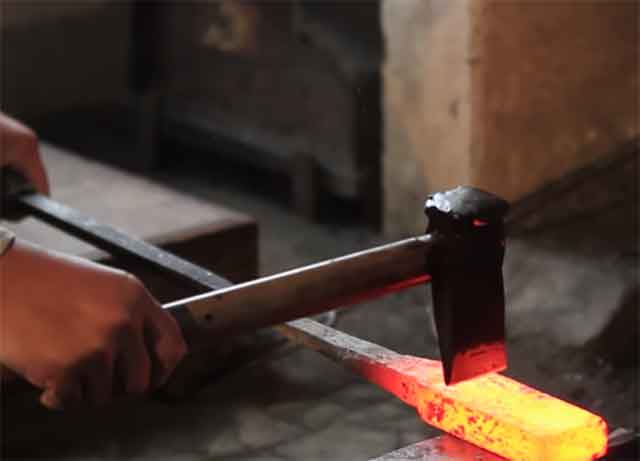
The process of making a katana, also known as the Japanese samurai sword, is a complex and time-consuming task that involves several different artisans. The process can take several months to a year to complete, depending on the level of craftsmanship and quality desired. The following is a general overview of the steps involved in making a katana:
Tamahagane production: The first step in making a katana is to create the tamahagane, or "jewel steel," which is made by smelting iron sand in a clay furnace. The furnace is heated to extremely high temperatures, and the iron sand is melted and poured into molds. The tamahagane is then cooled and removed from the molds.
Tatara: The tamahagane is then taken to the tatara, where it is heated again and folded multiple times to create a strong and durable blade. The sword smith will fold the tamahagane several times, each time removing impurities and creating a stronger and more flexible steel.
Shaping: The sword smith will then use a variety of tools to shape the blade. This includes hammering it into the desired shape, and then using a file to refine the shape.
Hardening: The blade is then heated to a very high temperature and then quickly cooled in water. This process, called quenching, hardens the edge of the blade, making it harder and more durable than the spine.
Tempering: The blade is then heated again, but to a lower temperature, and then cooled slowly. This process, called tempering, gives the blade the necessary flexibility while maintaining its hardness.
Polishing: The sword smith will then use a series of abrasives to polish the blade to a mirror-like finish, removing any remaining impurities and bringing out the beauty of the steel.
Handle and Scabbard: The final steps are to add the handle, or tsuka, which is typically made of wood and wrapped in cord or fish skin to provide a secure grip, and the scabbard, or saya, which is used to protect the blade when not in use.
After the completion of all these steps, the sword is ready for final inspection and use. The craftsmanship and quality of the sword will vary depending on the skill and experience of the sword smith and the materials used.
Characteristics and features of katana
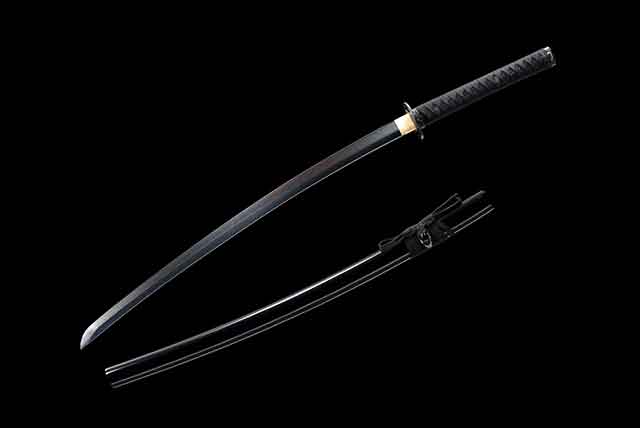
The katana is a type of Japanese sword that is characterized by its curved, single-edged blade. It is known for its elegant design, deadly efficiency, and cultural significance. The following are some of the key characteristics and features of the katana:
Blade: The katana is characterized by its long, curved blade that is typically around 2-3 feet in length. The curve of the blade is designed to allow for a more efficient cutting motion and to increase the sword's penetration power. The edge of the blade is typically made of a harder steel than the spine, which allows for a sharp and durable edge.
Handle: The handle, or tsuka, is typically made of wood and is wrapped in cord or fish skin to provide a secure grip. The handle's shape also helps to balance the sword and allows for comfortable and easy handling.
Scabbard: The sword is usually accompanied by a scabbard, or saya, which is used to protect the blade when not in use. The scabbard is often made of wood and is covered in lacquer or other materials to protect it from the elements.
Tsuba: The Tsuba is the hand guard. It's usually made of metal and can be decorated with different designs, it's a functional piece that helps to protect the user's hand from the opponent's sword.
Mekugi: The Mekugi is a small bamboo pin that holds the handle to the blade. It's a vital part of the sword, and it's essential that it's firmly in place to prevent the sword from falling apart.
Habaki: The Habaki is a collar-like piece that sits at the base of the blade and helps to lock the sword into the scabbard.
Bo-hi: Some katanas have a groove on the blade called Bo-hi. This groove helps to reduce the weight of the sword, making it more agile and easier to handle.
Hamon: The Hamon is a visible line that runs along the edge of the blade. It's created during the quenching process and it's a sign of a well-made sword.
Kissaki: The Kissaki is the tip of the sword and it's the sharpest part of the blade. The shape and size of the kissaki can vary depending on the sword's intended use.
The katana is an iconic weapon in Japanese history and culture, and it's still highly respected and admired today. The sword's elegant design and deadly efficiency make it a true work of art, and its legacy lives on in the hearts of many people around the world.
How was the katana used
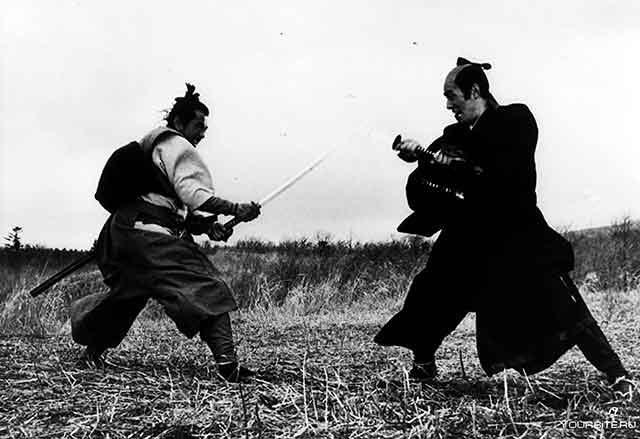
he samurai, a warrior class of feudal Japan, used the katana sword for both close-quarters combat and as a tool for ritual suicide. The sword was considered to be an extension of the samurai's soul and was highly respected and revered.
Combat: The samurai were trained to use the katana in a style of swordsmanship called kenjutsu, which emphasized fluid and precise movements. The samurai would use the katana to strike, thrust, and cut their opponents. They would also use it in combination with other weapons such as a bow, spear or even their bare hands.
Iaido: Iaido is a martial art that focuses on the smooth, controlled movements of drawing the sword from its scabbard, striking or cutting an opponent, removing blood from the blade, and then replacing the sword in the scabbard. The art emphasizes the development of the warrior spirit and the cultivation of inner peace through the mastery of the sword.
Seppuku: Seppuku is a form of honorable suicide that was used to restore honor to oneself or one's family. The samurai would perform Seppuku by disembowelling themselves with their katana sword. The ritual was considered to be a way for a samurai to regain his honor after a defeat or disgrace.
Ceremonial use: The katana was also used in ceremonial events, such as the granting of an audience with a daimyo or shogun, or the inauguration of a new emperor. The sword was considered to be a symbol of the samurai's power and status, and it was often presented as a gift or awarded as a prize.
Spiritual connection: The samurai had a deep spiritual connection to their katanas, they would often have their swords with them even when they weren't in battle. They believed that the sword held a spirit, and it was treated with the utmost respect and care. The samurai would often practice rituals to honor their swords and keep them in good condition.
In summary, the katana was not only a weapon for the samurai, but also a symbol of their power and status, a tool for ritual suicide, and an object of spiritual significance. The sword was a central part of the samurai's identity and was treated with the utmost respect and care.
See also
-
Sojutsu - The Art of the Spear
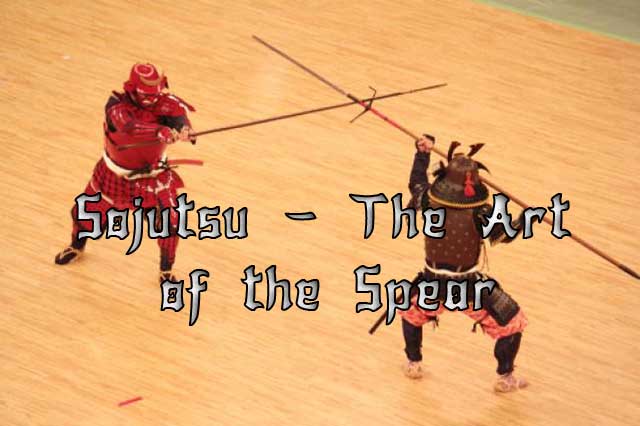
Sojutsu is a traditional Japanese martial art dedicated to the mastery of the yari spear. It is considered the second most important martial art of medieval Japan after swordsmanship.
-
Yari
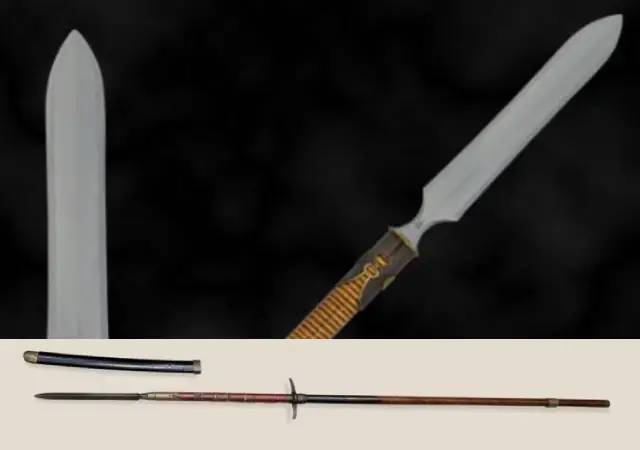
Yari is one of the traditional Japanese cold weapons (nihonto), which is a spear with a straight tip. The art of wielding a yari is known as sojutsu, a spear fighting technique.
-
Wakizashi and tanto

In the history of Japanese edged weapons there are objects that border between the concepts of “sword” and “knife”. This is especially true of the wakizashi, a short sword traditionally carried by samurai along with the katana, and the tanto, a combat knife popular among a wide range of social classes. Both items were worn behind the belt, had a short blade, and were used in close combat. However, there is a fundamental difference between the two, and it goes far beyond simple blade length.
-
Katana and Tachi
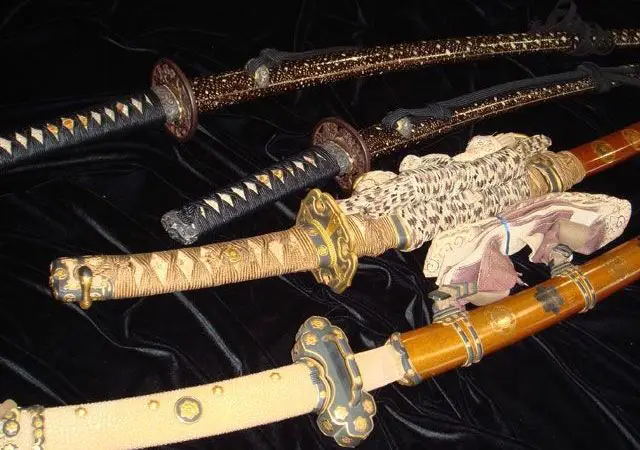
When Westerners think of Japanese swords, they often picture the iconic curved blades like the katana. However, in terms of historical precedence and prestige, it would be more accurate to reverse this image—the tachi predates the katana and traditionally held a higher status.
-
Daisho: The Origins and Evolution of the Samurai Sword Pair
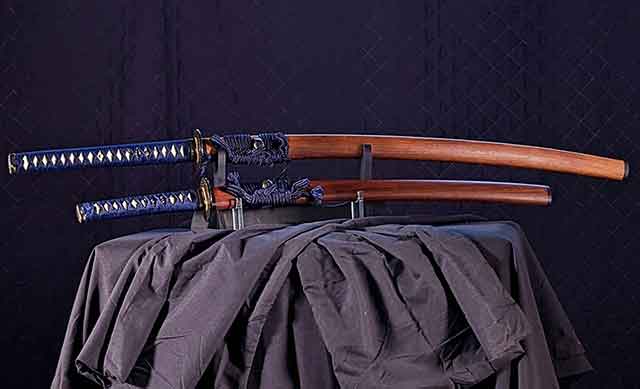
The term "daisho" finds its roots in the combination of two Japanese words: "daito," denoting a long sword, and "shoto," signifying a short sword. The combination of the words daito and shoto made the word. Daisho referred to the practice of wearing both a long and short katana together, regardless of their matching characteristics. While the classic depiction of daisho involves a katana and wakizashi (or tanto) in matching koshirae, any pairing of a longer sword with a tanto can also be considered a daisho. It later came to mean two swords with coordinated fittings. While having blades from the same swordsmith was an option, it was not a requirement for a pair to be classified as a daisho, as this would have been a more costly choice for a samurai.
-
Tanto
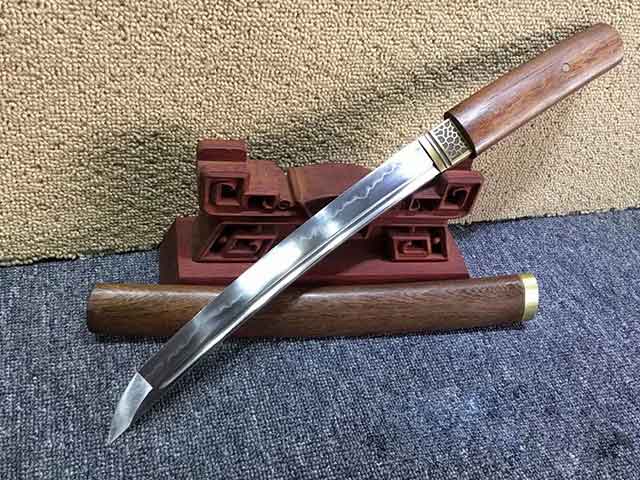
The Tanto knife is a traditional Japanese dagger that was once an integral part of the samurai warrior’s arsenal. It is known for its unique shape and cutting ability, and it is still revered by many martial artists and knife enthusiasts today.
-
Tachi
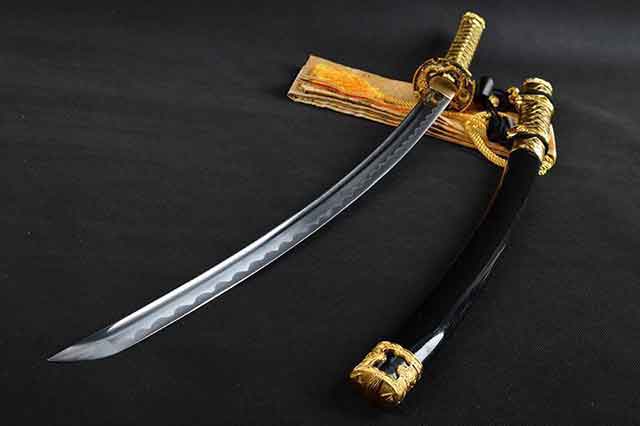
The samurai sword known as Tachi is one of the most iconic weapons in Japanese history. Its unique design and construction made it a popular choice among samurai warriors, and it played a significant role in many battles throughout Japan's history.
-
Nagitana
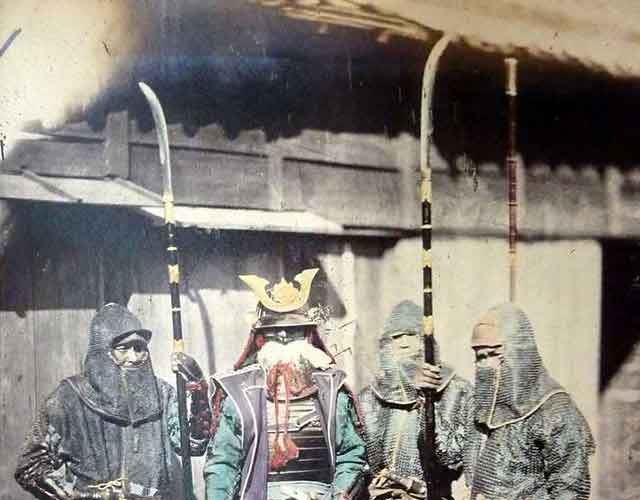
The Nagitana is a formidable weapon that was used by the samurai during feudal Japan. It was a polearm that combined the elements of a spear and a sword, making it a versatile weapon that was effective both at long range and in close combat. In this article, we will explore the history, construction, characteristics, and usage of the Nagitana.

